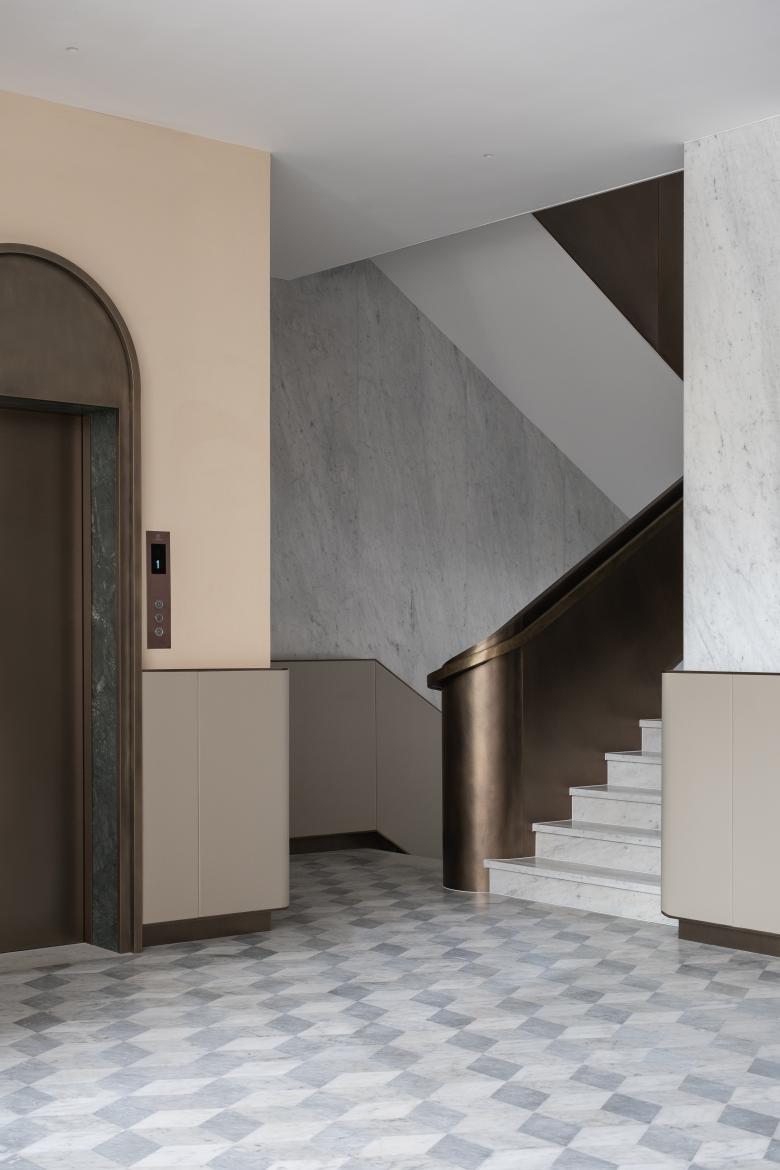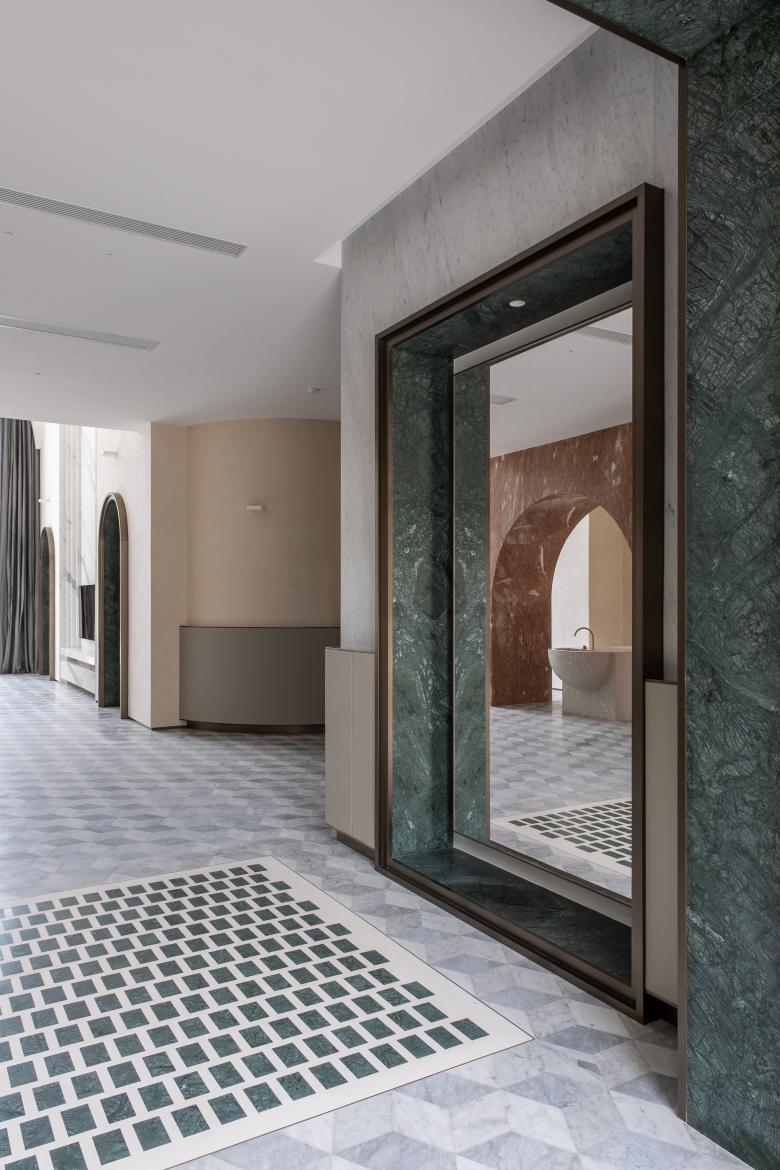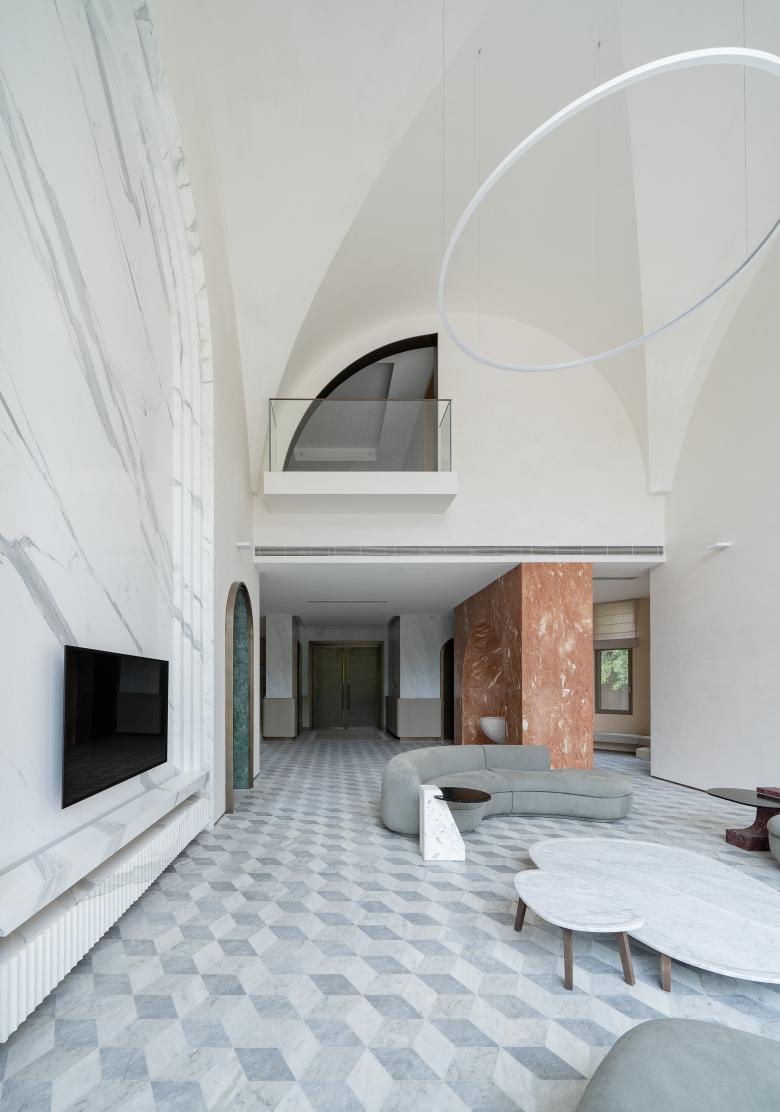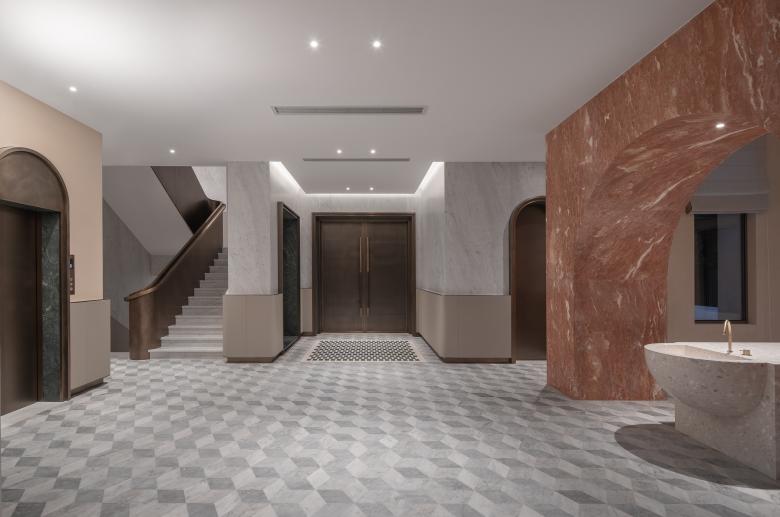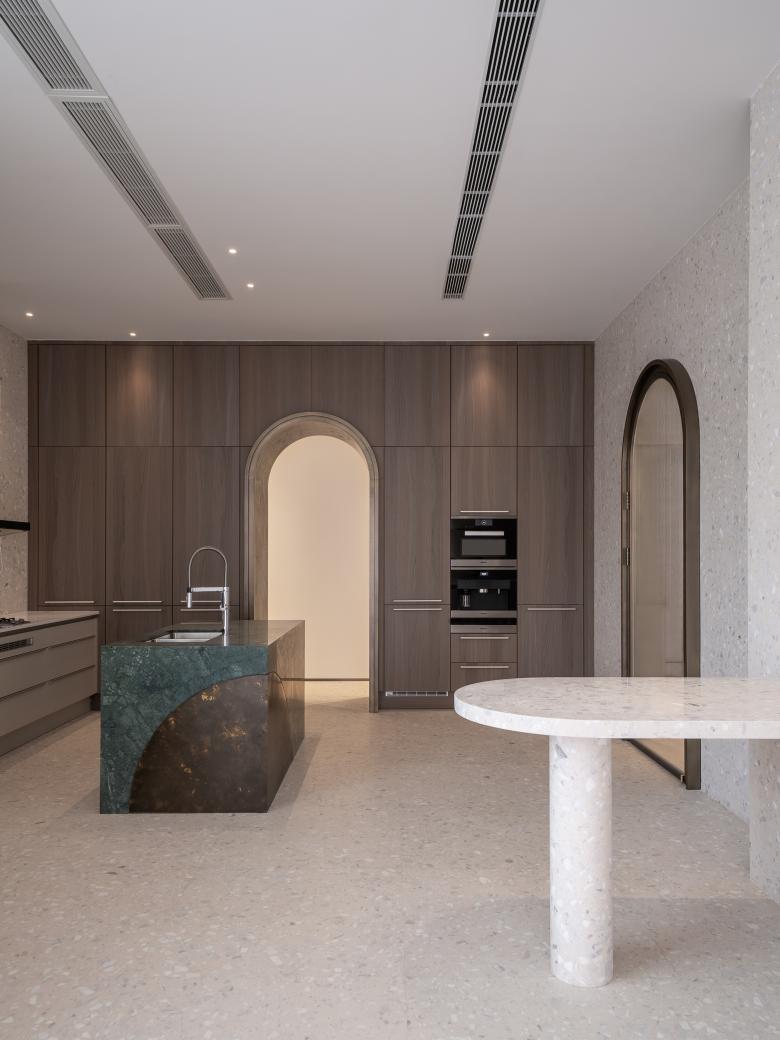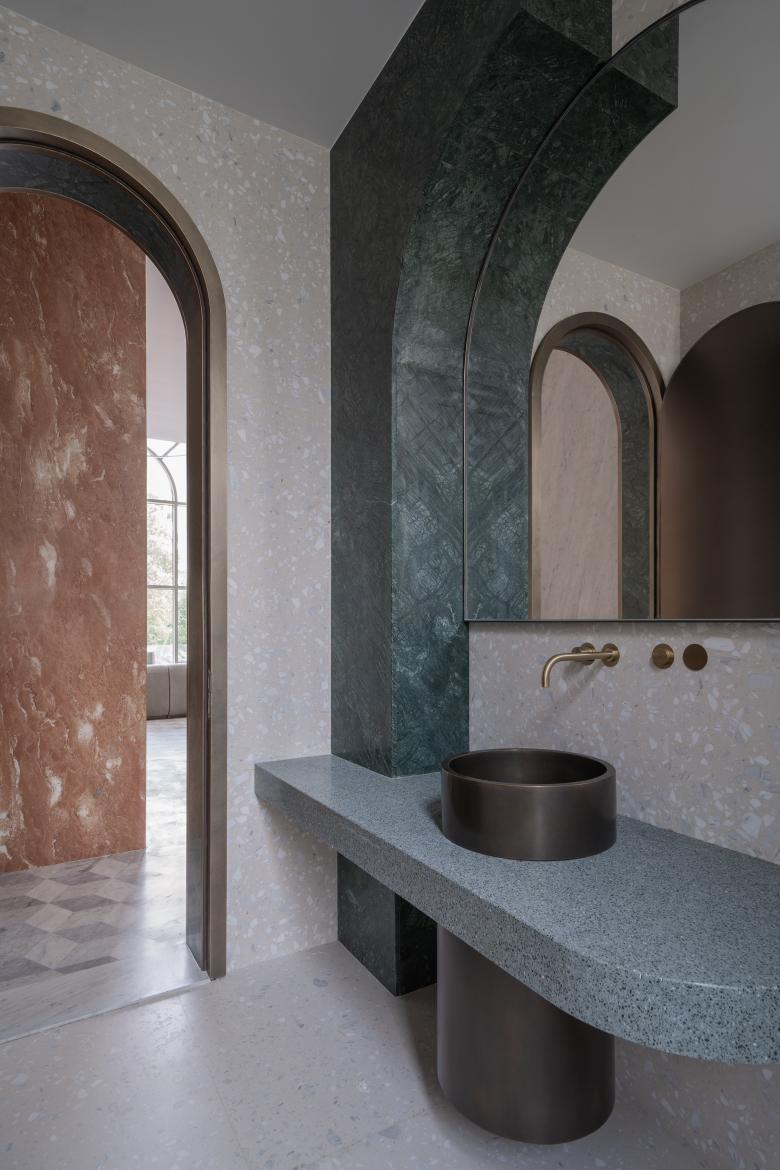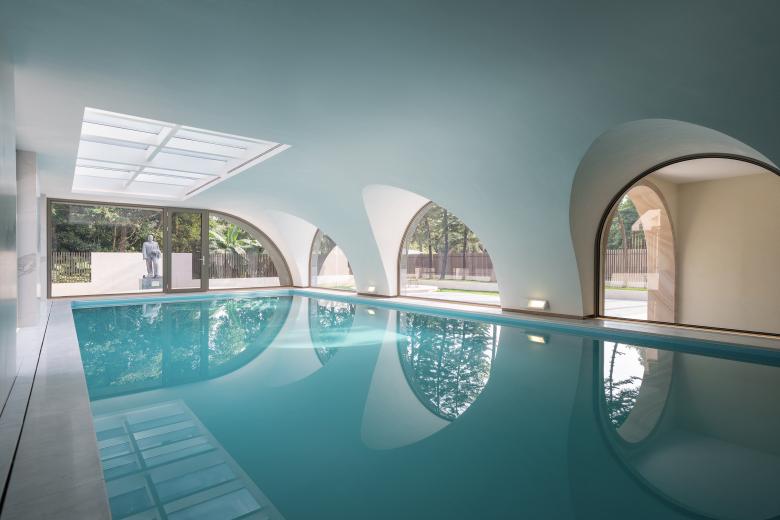Vista House - Remodeling of a Private Residence
Shenzhen, China
In the summer of 2018, we accepted the commission to remodel the house in the suburb of Shenzhen for a private client, who wishes to add some contemporary and whimsical taste to this single-family house that they have been living in for more than a decade.
The architecture was originally of Italian style and hidden in the lush landscape, which almost would make you feel like being in a parallel universe of the Tuscany countryside. Due to stringent statuary restrictions on exterior renovation, we focused instead on reshaping the interior space as well as reinforcing its connection with the exterior.
We approached the design by turning to the historical archetypes of countryside villas for inspirations: in the Palladian villas, perspective and depth of spaces are often reinforced to facilitate interactions between the interior and vistas of landscape. As contemporary interpretation, we have added horizontal and vertical openings in the house to reinforce both the depth and superimposing of spaces, connecting them with lines of views. Furthermore, arched window openings have been added on the exterior walls, acting as framing medium of the landscape vista for the spectators indoor.
There were various rooms and spaces in the original building, yet mostly separated and isolated, connected only through doors. We have restructured the space so that the foyer has been established as the juncture of communal spaces, views and flows, where other spaces are organized around.
Furthermore, we have reduced the classical components in the original building to abstract blocks, proportions, and symbols, before re-introducing them into the space.
The addition of the arch between the foyer and tearoom softly redefines the two spaces; when observers look out to the woods outside of the tearoom windows, the arch serve both as frame and reference for viewers, while it blocks the view from the living space to the powder room door.
Kitchen and breakfast room were merged to be a larger space, while the added four paired arch openings form a closed circulation and visual loop to interconnect the public spaces of living, dining and kitchen. At the end of the visual lines from the living space through dining room to the kitchen is a translucent wall built of glass blocks, through which trees and shadow can be vaguely seen.
An opening in the shape of a quarter circle with a small cantilevering balcony has been added on the wall of the second level family space, forming connections between public spaces in the first and second levels. From the family space and through the fan-shaped opening, one can also get a peek of the exterior vista of the landscape framed by the arched window.
Additionally, we have also renovated the basement swimming pool; As the first level is raised, the basement is at the same level with the rear garden which the pool extends into, with arched glass window on three sides ; To some extent, it is much like a loggia that is quite common in Palladian villas. Addition of vaulted dropped ceiling merges with the wall seamlessly, guiding views towards the sculpture and distant countryside view at the far end. Rippled reflection of the lush in the pool through the skylight is re-projected to the vaulted ceiling, making you feel that you are outside in nature.
- Architects
- Studio 10
- Location
- Shenzhen, China
- Year
- 2020
- Team
- Cristina Moreno Cabello, Shuzhen Yao, Xin Zheng, Xiangtong Wu (Intern), Lu Yu (Intern), Yue Yu (Intern), Jiaxiao Bao (Project Assistant), Ming Tang (Project Assistant), Shi Zhou(Director)
